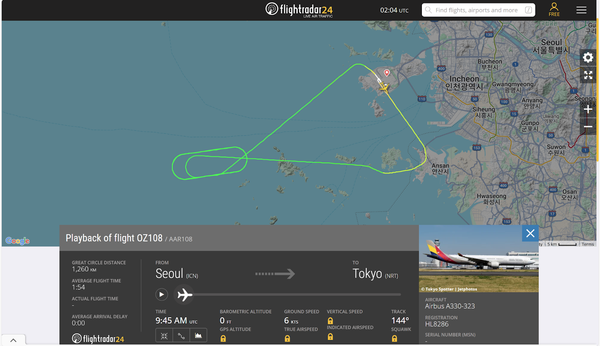Saudia, the state-owned flag carrier of Saudi Arabia, plans to add the Airbus A321neo to its fleet. The airline sees the addition of 20 A321neo aircraft by 2026 as a key component of its expansion plans. The Airbus A321neo is a part of the Airbus A320neo family, offering high-performance levels and seating between 180 and 220 passengers in a two-class interior layout.
Saudia purchased the Airbus A321neo aircraft since they could help the airline meet its sustainability goals. Since Airbus' A320neo aircraft family became operational in 2016, it has saved 20 million tons of carbon dioxide. The A320neo did so by incorporating Sharklets, which are upward or downward-curved extensions at the wing tips, into the aircraft design. Furthermore, the A320neo has updated cabins and engines that are more fuel-efficient.

The Airbus A320neo family has seen the following benefits compared to previous-generation aircraft:
- 20% reduction in fuel burning and carbon dioxide emissions
- 50% reduction in noise footprint
- 5% lower airframe maintenance costs
- 14% lower cash operating costs per seat
Captain Ibrahim Koshy, CEO of Saudia, said: "We are excited to expand our fleet with the new Airbus A321neo aircraft. Our priority is to offer the best guest experience possible and to bring the world to Saudi Arabia, and we will continue to purchase state-of-the-art aircraft from the world's top manufacturers to deliver on that promise."
Koshy later added: "We commend Airbus for continuously looking to improve the performance of their aircraft, which goes in line with Saudia's ambition to provide the best guest experience possible while contributing to make aviation more sustainable."

Airbus has a large presence in Saudi Arabia that includes providing commercial aircraft to Saudia and producing military aircraft for multiple Saudi defense companies. Airbus supports the Saudi Aviation Strategy objectives that aim to establish Saudi Arabia as a global leader in the aviation industry. These objectives include improvements to passenger experience, flight safety, and environmental sustainability.
Meanwhile, Saudia aims to bring approximately 330 million international passengers to Saudi Arabia by 2030. The airline is working with Airbus and Boeing to expand its fleet and become a leading global airline. In March, Boeing received an order for up to 121 Boeing 787 aircraft from Saudia and Riyadh Air. This was part of one of the company's largest deals in recent history. The aircraft are expected to be divided evenly between the two airlines.

The orders for the Airbus A321neo aircraft come as Saudi Arabia expands its aviation industry to meet its tourism goals. The country has invested heavily in aviation as part of its Vision 2030 plan to diversify its economy away from oil and gas. Saudi Arabia is currently a popular destination for work and religious purposes, with the recent Hajj season creating approximately $12 billion in revenues for the country.
To attract international leisure travelers, Saudi Arabia has announced multiple plans to improve its tourism and aviation infrastructure. Aside from promoting its tourist attractions and simplifying entry requirements, the country plans to invest in its airports.
One such project involves replacing King Khalid International Airport (RUH) in Riyadh with King Salman International Airport. The newly built airport will have a capacity of around 25 million annual passengers. It will help Riyadh meet its goal of accommodating 120 million annual passengers by 2030. Once complete, the airport will be one of the world's biggest and add $7.18 billion to Saudi Arabia's economy.

Saudi Arabia also plans to compete against Qatar and the United Arab Emirates (UAE) to become the center of aviation in the Gulf region. Both countries have achieved global prominence through their airlines and airports. Emirates, Etihad Airways, and Qatar Airways are used by passengers worldwide and rank among the world's leading airlines. These airlines provide passengers with flights around the world through connections at their hubs at Dubai International Airport (DXB), Abu Dhabi International Airport (AUH), and Hamad International Airport (DOH), respectively.
To stand out in a competitive aviation market, Saudi Arabia announced the launch of a second national airline called Riyadh Air. The airline's goal is to help the country meet its goal of becoming a global aviation hub. Saudi Arabia has an advantage over neighboring countries due to its large population and labor market. This will provide Saudia and Riyadh Air with a large supply of personnel including pilots and cabin crew.
Comments (0)
Add Your Comment
SHARE
TAGS
NEWS Saudia Airbus A321 A321neo Airbus Saudi ArabiaRECENTLY PUBLISHED
 Tokyo-Bound Asiana Flight Experiences Engine Failure
An Asiana Airlines flight bound for Tokyo experienced an engine failure, prompting its return to Incheon International Airport.
NEWS
READ MORE »
Tokyo-Bound Asiana Flight Experiences Engine Failure
An Asiana Airlines flight bound for Tokyo experienced an engine failure, prompting its return to Incheon International Airport.
NEWS
READ MORE »
 Learjet Owned By Vince Neil Crashes Into Gulfstream Jet, 1 Fatality Confirmed
On February 10th, around 14:30 local time, a Learjet private jet aircraft crashed into another private jet after landing at Scottsdale Airport (SCF) in Arizona.
NEWS
READ MORE »
Learjet Owned By Vince Neil Crashes Into Gulfstream Jet, 1 Fatality Confirmed
On February 10th, around 14:30 local time, a Learjet private jet aircraft crashed into another private jet after landing at Scottsdale Airport (SCF) in Arizona.
NEWS
READ MORE »
 Seattle Plane Strike 2025: Japan Airlines and Delta Collision Raises Safety Concerns
Seattle-Tacoma International Airport saw a concerning incident on Wednesday morning when a Japan Airlines (JAL) plane clipped a parked Delta Air Lines jet while taxiing. Thankfully, no one was injured, but passengers described the collision as a frightening experience.
NEWS
READ MORE »
Seattle Plane Strike 2025: Japan Airlines and Delta Collision Raises Safety Concerns
Seattle-Tacoma International Airport saw a concerning incident on Wednesday morning when a Japan Airlines (JAL) plane clipped a parked Delta Air Lines jet while taxiing. Thankfully, no one was injured, but passengers described the collision as a frightening experience.
NEWS
READ MORE »



